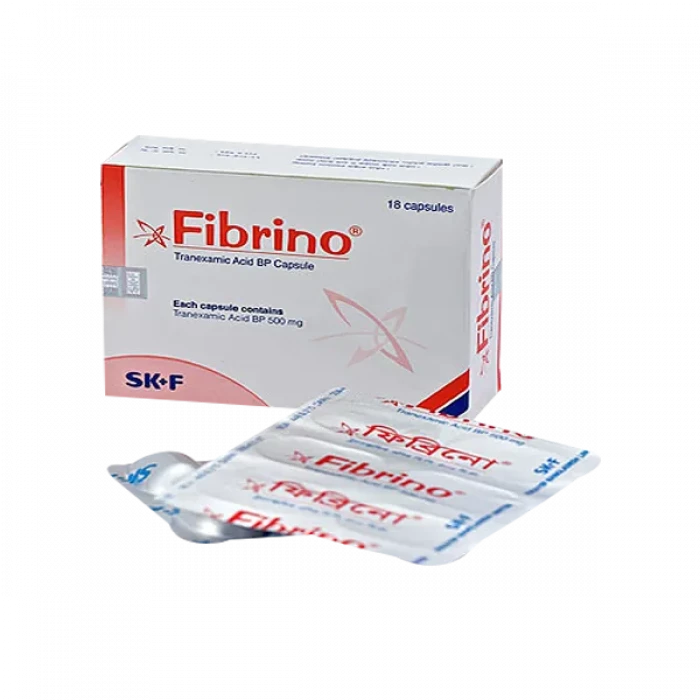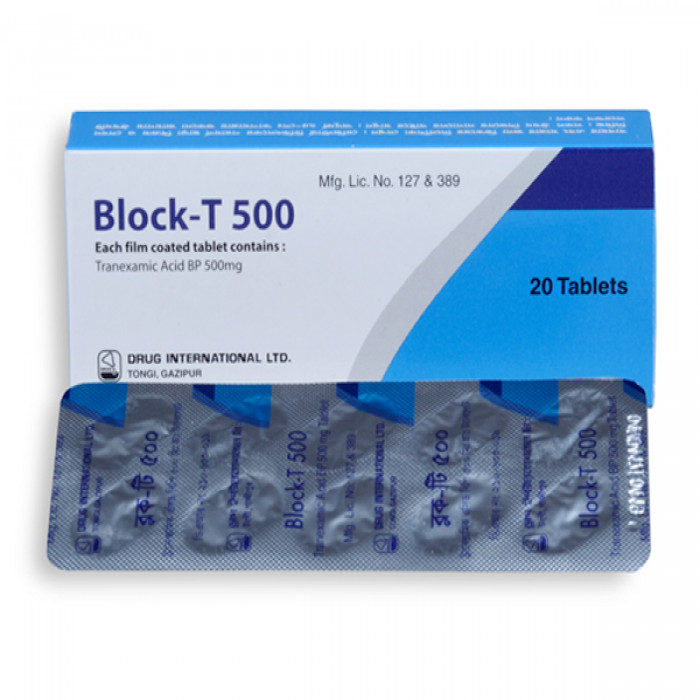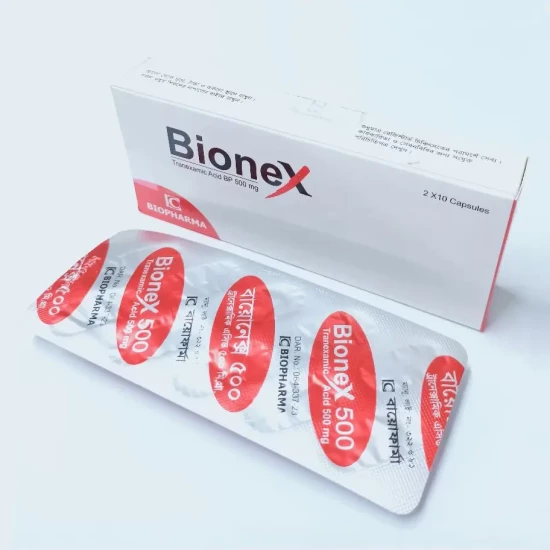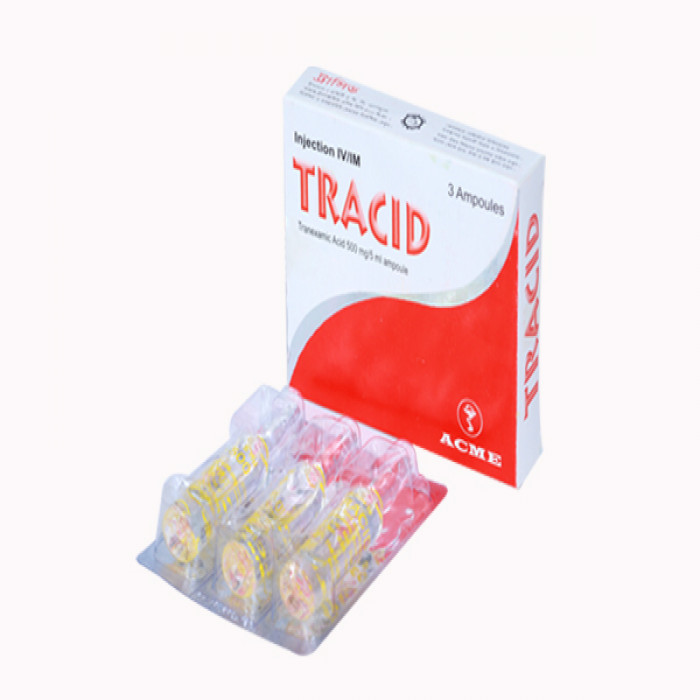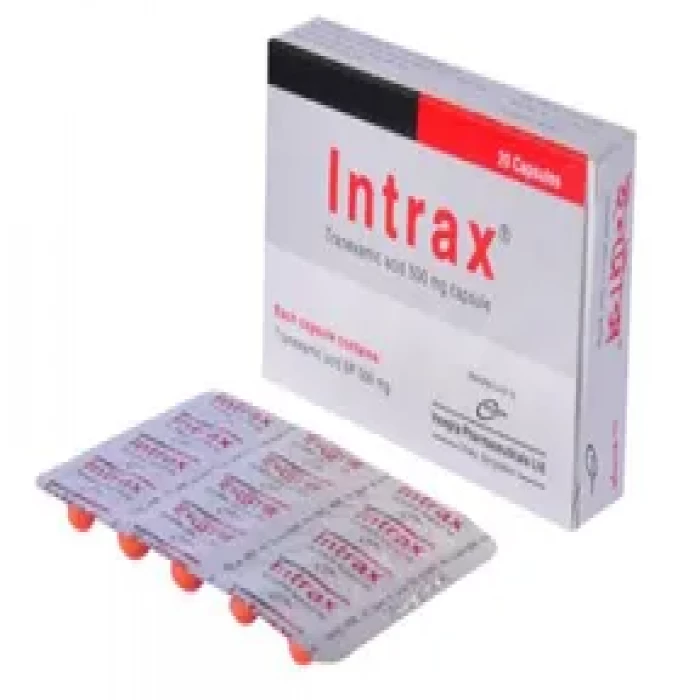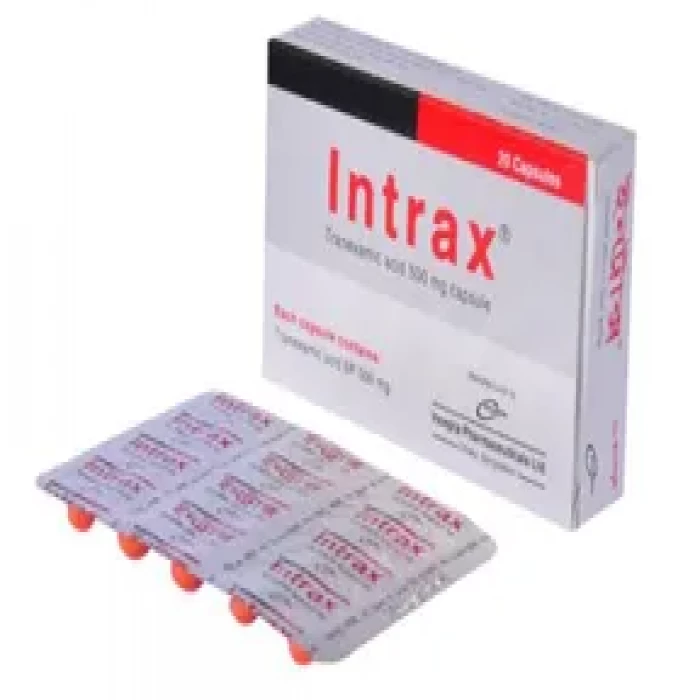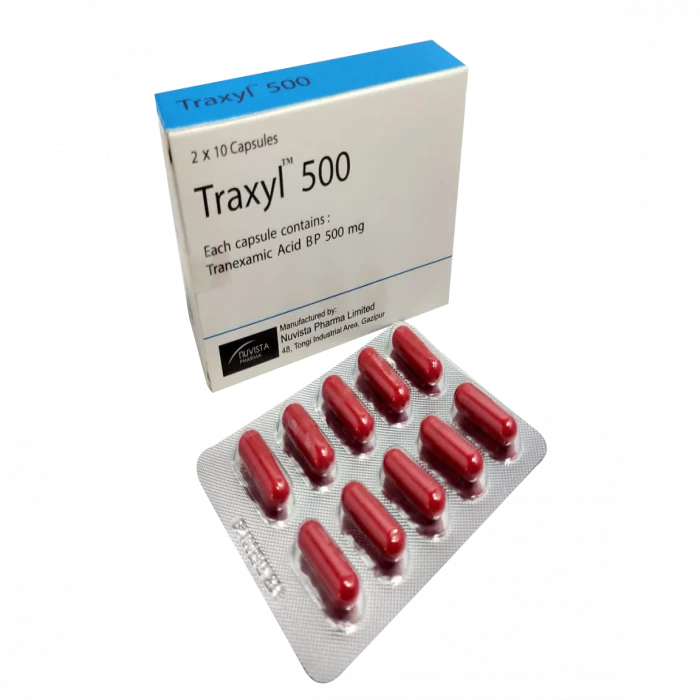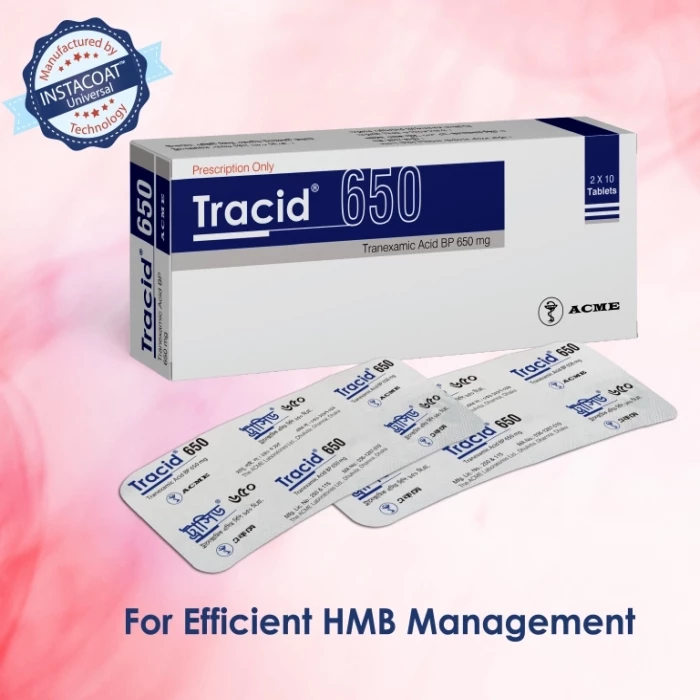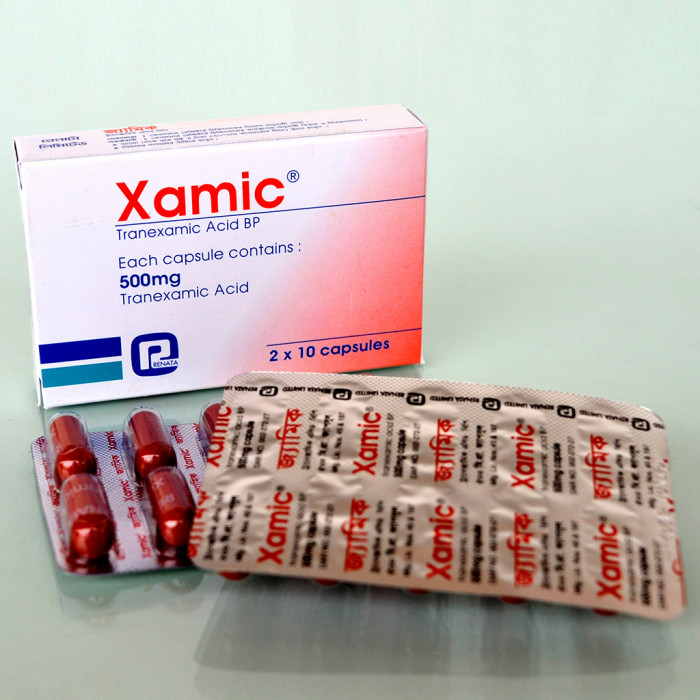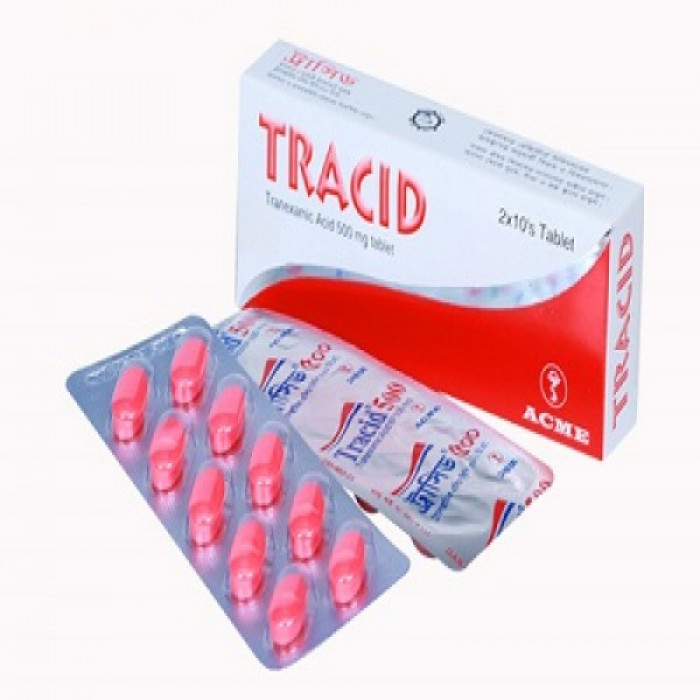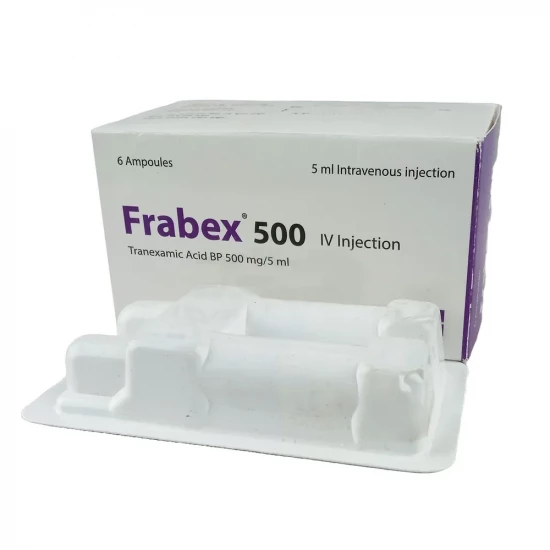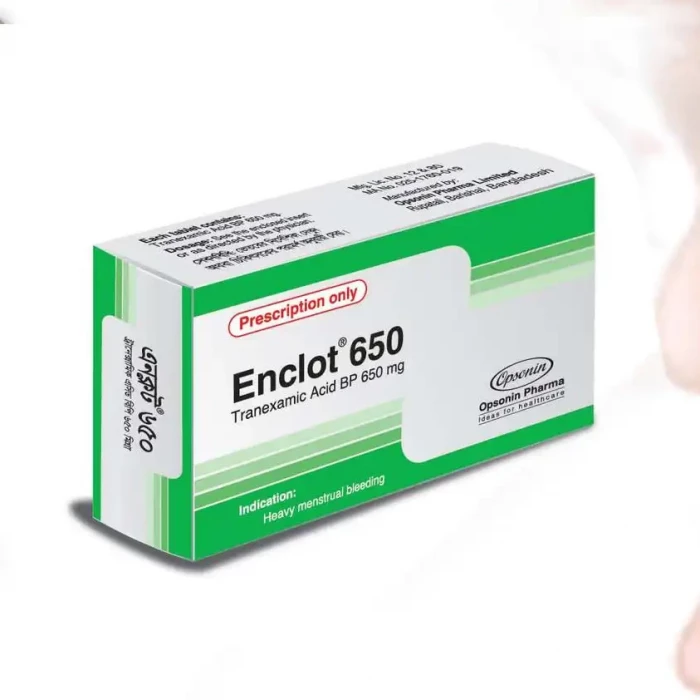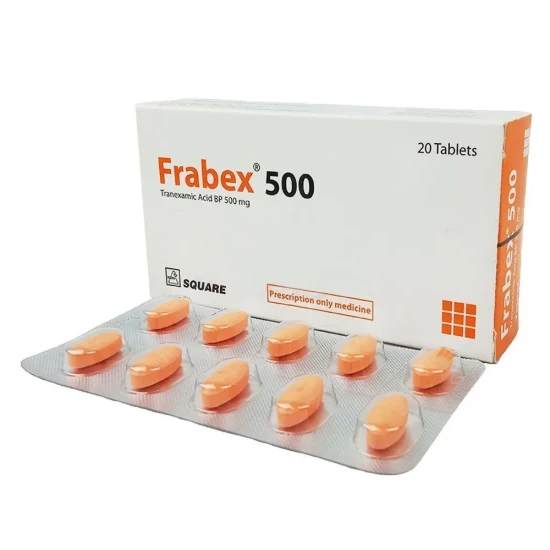
✔ 100% Authentic Product
👁️ Currently Viewing 1747
Frabex 500mg 10pcs
Generic Name: Tranexamic Acid 500mg
Manufacturer/Distributor: Square Pharmaceuticals Ltd.
Discount
Price: ৳ 216
MRP:
৳
230
6%
Off

100% Genuine Products, Guaranteed

Safe & Secure Payments, Always

Fast, Secure & Efficient Delivery

Proper Packaging
 Cash on Delivery - All over Bangladesh
Cash on Delivery - All over Bangladesh Regular Delivery - 12-24 Hours, Dhaka City* Charge Tk.39-59
Regular Delivery - 12-24 Hours, Dhaka City* Charge Tk.39-59 Regular Delivery - 24-48 Hours, Other Cities* Charge Tk.99-110
Regular Delivery - 24-48 Hours, Other Cities* Charge Tk.99-110
 ফ্রি ডেলিভারিঃ - ৯৯৯ টাকা+ অর্ডারে, ঢাকা
শহরে
ফ্রি ডেলিভারিঃ - ৯৯৯ টাকা+ অর্ডারে, ঢাকা
শহরে ফ্রি ডেলিভারিঃ - ২৯৯৯ টাকা+ অর্ডারে, ঢাকার
বাহিরে
ফ্রি ডেলিভারিঃ - ২৯৯৯ টাকা+ অর্ডারে, ঢাকার
বাহিরে
100% Genuine Products, Guaranteed
Safe & Secure Payments, Always
Fast, Secure & Efficient Delivery
Proper Packaging
 Cash on Delivery - All over Bangladesh
Cash on Delivery - All over Bangladesh Regular Delivery - 12-24 Hours, Dhaka City* Charge Tk.39-59
Regular Delivery - 12-24 Hours, Dhaka City* Charge Tk.39-59 Regular Delivery - 24-48 Hours, Other Cities* Charge Tk.99-110
Regular Delivery - 24-48 Hours, Other Cities* Charge Tk.99-110 ফ্রি ডেলিভারিঃ - ৯৯৯ টাকা+ অর্ডারে, ঢাকা
শহরে
ফ্রি ডেলিভারিঃ - ৯৯৯ টাকা+ অর্ডারে, ঢাকা
শহরে ফ্রি ডেলিভারিঃ - ২৯৯৯ টাকা+ অর্ডারে, ঢাকার
বাহিরে
ফ্রি ডেলিভারিঃ - ২৯৯৯ টাকা+ অর্ডারে, ঢাকার
বাহিরে
✅ Description:
Indication
In medicine, homophones, digestive hemorrhages, hemorrhagic syndromes in leukemia, cirrhosis, hemophilia, thrombocytopenic purpura, and mishaps during thrombolytic treatment and transfusion are all treated.
Prophylaxis and antihemorrhagic treatment for many types of procedures, notably pulmonary, cardiovascular, and abdominal surgery, as well as post-operative and traumatic shock.
Prophylaxis and antihemorrhagic treatment for prostatic, vesical, and renal surgery in urology. Hematurias.
In obstetrics, prophylaxis and treatment of post-partum and puerperium hemorrhages, hemorrhagic neuropathies, functional menometrorrhagia, idiopathic or IUD-induced menorrhagias, primitive hyperfibrinolysis (abruptio placentae, premature placenta separation), and cervical conization.
Prophylaxis and antihemorrhagic treatment after a tonsillectomy, specialized surgery in general, and epistaxis are all examples of otorhinolaryngology.
In stomatology, prophylaxis and antihemorrhagic treatment are used during maxillofacial procedures, such as tooth extractions.
In oncology (as a form of supportive therapy): To stimulate the development of a fibrin capsule that would act as a barrier, inhibiting the growth of ovarian tumors. To produce ascites regression as a result of malignancy. To decrease bleeding during surgical procedures.
Pharmacology
Tranexamic Acid has a strong inhibitory effect on the activation of plasminogen, i.e. the conversion of plasminogen to plasmin, in the fibrinolytic system. The half-life is 1-2 hours. Plasma protein binding is 3% at therapeutic plasma levels. Tranexamic acid is rapidly absorbed from the gastrointestinal tract. Maximum serum levels are reached within 2-3 hours.
Dosage & Administration
Intravenous administration is necessary only if it is difficult to give adequate doses by mouth. The recommended standard dose is 1 to 1.5 gm or 5-10 ml by slow intravenous injection at a rate of 1ml/minute, two to three times daily.
For the indications listed below the following doses are recommended.
Prostatectomy: 5-10 ml by slow intravenous injection every eight hours (the first injection is given during the operation) for the first three days after surgery; thereafter 1-1.5 gm orally three to four times daily until macroscopic haematuria is no longer present.
Menorrhagia: 1-1.5 gm orally three to four times daily for three to four days.
Epistaxis: 1.5 gm orally three times daily for four to ten days. Tranexamic Acid may be applied topically to the nasal mucosa of patients suffering from epistaxis. This can be done by soaking a gauze strip in the solution and then packing the nasal cavity.
Haematuria: 1-1.5 gm orally 2-3 times daily until macroscopic haematuria is no longer present.
Conization of the Cervix: 1.5 gm orally 3 times a day for 12 to 14 days postoperatively.
Dental Surgery In Patients With Coagulopathy: Immediately before surgery, 10 mg per kg body weight should be given intravenously. After surgery, 25 mg per kg body weight is given orally three to four times daily for six to eight days. Coagulation factor concentrate might be necessary to administrate.
General Fibrinolysis: 1.0 gm (10 ml) by slow intravenous injection three to four times daily. With fibrinolysis in conjunction with diagnosed, increased intravascular coagulation i.e. defibrillation syndrome, an anticoagulant such as heparin may be given with caution.
Hereditary Angioneurotic Oedema: 1-1.5 gm orally two to three times daily as intermittent or continuous treatment depending on whether the patient has prodromal symptoms or not.
Renal Insufficiency: For patients with impaired renal function, the following dosages are recommended: Serum creatinine Dose IV Dose Orally Dose frequency (micromol/L) 120-249 10 mg/kg 15 mg/kg twice daily 250-500 10 mg/kg 15 mg/kg daily >500 5 mg/kg 7.5mg/kg daily
Children:
- Oral dose: 25 mg/kg 2 to 3 times daily for 7 to 10 days.
- Injection: 10 mg/kg 6 to 8 hours for 7 to 10 days
Interaction
Tranexamic Corrosive may be an engineered Amino Corrosive that's inconsistent with arrangements containing penicillins (eg: Benzylpenicillin). Thrombolytic drugs like Streptokinase & Urokinase alienate the antifibrinolytic activity of Tranexamic Corrosive. The potential for thrombus arrangement may be expanded by the concomitant organization of estrogen-containing drugs, like verbal contraceptives. Coordinate admixture of
Tranexamic Corrosive with entirety blood ought to be dodged amid Transfusion.
Contraindications
Active thromboembolic diseases, such as deep vein thrombosis, pulmonary embolism and cerebral thrombosis, and Subarachnoid haemorrhage. Hypersensitivity to Tranexamic Acid or any of the ingredients
Side Effects
Tranexamic Corrosive is for the most part well endured; there may be occasional cases of sense of weakness, conjunctival bothering, nasal blockage, tingling, skin blushing, and exanthems.
After verbal organization, there may be signs of sickness, loose bowels, and gastric pyrosis.
There are uncommon cases of postural hypotension.
In the case of extreme touchiness to tranexamic corrosive, dodge or suspend treatment and begin a reasonable therapy.
Pregnancy & Lactation
US FDA pregnancy category B. Tranexamic Acid crosses the placenta. Clinical experience of use in pregnant women is limited. Animal studies have not supplied any evidence of an increased incidence of fetal damage. Tranexamic Acid is excreted into breast milk, but it is not likely to influence the child at therapeutic doses.
Precautions & Warnings
Patients with irregular menstrual bleeding and patients with a high risk of thrombosis (a previous thromboembolic event and a family history of thromboembolic disease) should use it only if there is a strong medical indication and under strict medical supervision. Patients with disseminated intravascular coagulation (DIC), who require treatment with it must be under the strict supervision of a physician experienced in treating this disorder. In the long-term treatment of patients, regular eye examinations should be performed. If a color vision disorder should occur during the course of treatment, the drug should be discontinued
Storage Conditions
Store in a dry put at 15-30°C, absent from light and keep out of children's reach.
⚠️Disclaimer:
At ePharma, we’re committed to providing accurate and accessible health information. However, all content is intended for informational purposes only and should not replace medical advice from a qualified physician. Please consult your healthcare provider for personalized guidance. We aim to support, not substitute, the doctor-patient relationship.




